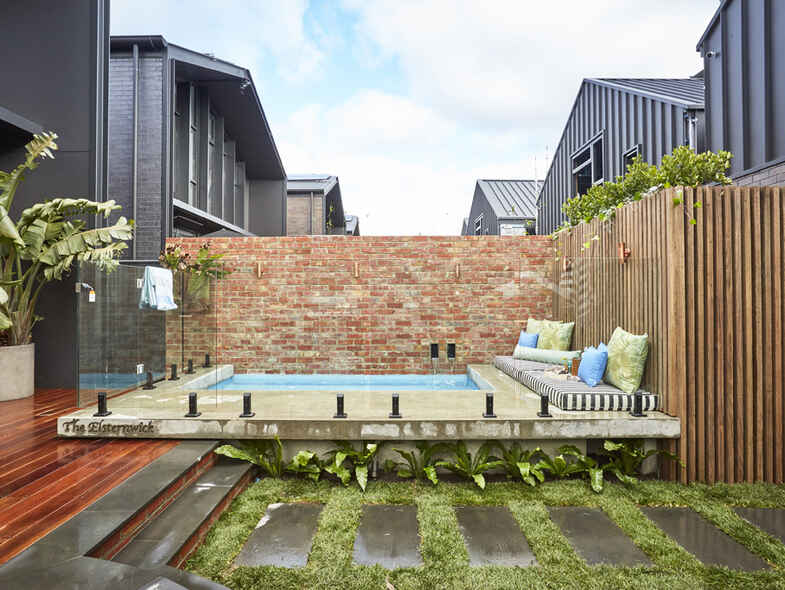The warm Canberra weather is certainly felt during summer and the early spring months and as a result, those who have a swimming pool will certainly be popular with friends, family and neighbours. Pool safety is extremely important, especially ensuring your fencing complies with legislation. Below, we outline the must-dos when constructing a swimming pool to ensure it meets legislation, plus which fencing will look great from an aesthetic point of view.
What are the rules?
According to Access Canberra, a swimming pool means “an excavation, structure or vessel that can be filled with water to a depth of more than 300mm that can be used for swimming, wading, paddling or any other human aquatic activity.” When constructing a swimming pool or spa, a pool fence or barrier must:
• Be at least 1.2m high, except when part of a land barrier fence, then they must be at least 1.8m high
• Have vertical supports that cannot be climbed and do not have a gap exceeding 100mm
• A pool gate is needed and must swing away from the pool area and be self-closing
• The latch release mechanism to the gate should be 1.5m above ground level or, if lower, be shielded in order to restrict access to the mechanism by children
After the fence is installed, the owner of the property must apply for a certificate of occupancy and use for the swimming pool fence or barrier.
How do you create the best look?
In an ideal world, it would be best to engage a landscape designer who can ensure your pool fence and backyard landscaping work together seamlessly. However, if you are unable to do this, there are many ways to ensure you do not install the wrong pool fence and create an eyesore in your yard.
Firstly, think about where your pool will be positioned and what material will look best with existing or intended planting. Glass fencing seems to be the most popular and is the least risky choice, but it is also the most expensive. Glass can integrate with the surroundings well because it basically disappears and doesn’t create a visual barrier. Glass is also low maintenance and extremely durable. It is also safe because it is harder to climb. Frameless glass will be the best choice, but if you can’t quite afford this look, framed glass would be the second best option. For the frame, choose black because as a colour, it moves away from the eye instead of jumping out at you. Black also looks great against greenery should you choose to plant near your pool fence.
Another option for those that find glass too modern and expensive would be a powder-coated aluminium fence. Again, a black or dark grey powder coat works well, and you can even create a more luxe or resort-like feel by having the main upright posts made from hardwood such as merbau. If you choose to integrate timber, remember there will be some maintenance to ensure your timber lasts a long time.
The third option that is really lovely and creates a stylish and long-lasting look is combining hardwood rails and stainless steel vertical wires. This design incorporates more timber, so it can be more of a statement, and if you have hardwood decking, it can compliment this nicely as you are visually tying in various elements of your backyard.
When it comes to pool fencing, number one is safety and compliance with legislation. It is always wise to get advice from an expert, especially if you are installing a DIY pool fence. In relation to what materials you choose, you need to consider how the pool fence works aesthetically with other areas of your landscape and visually links with your house.





